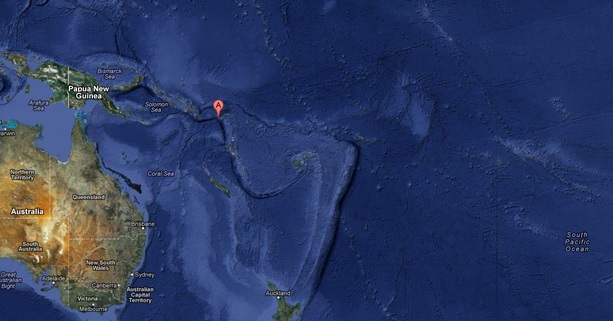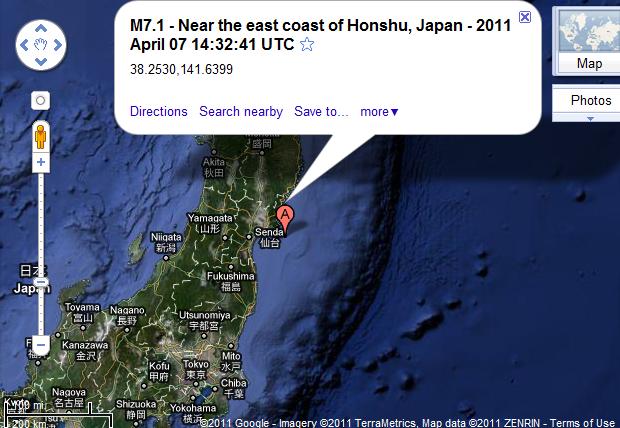A 6.6 magnitude earthquake hit Japan's coast Monday night.
A preliminary estimate put the quake's magnitude at 7.1, which was later lowered to 6.6, according to the U.S. Geological Survey. A series of smaller quakes continued to shake the region. Residents in Tokyo also felt the jolts.
A tsunami warning issued by Japan's Meteorological Agency was later canceled.
Monday's initial quake was centered about 101 miles northeast of Tokyo, or about 31 miles southwest of the crippled Fukushima Daiichi nuclear plant.
Workers at the plant were asked to evacuate for a time, but later returned to resume their efforts to cool the troubled nuclear facility.
The latest aftershock came almost exactly one month after the 9.0 magnitude March 11 quake, which caused a tsunami that washed away whole towns and villages along the country's northeast coast.

 Tuesday, February 5, 2013 at 9:26PM
Tuesday, February 5, 2013 at 9:26PM 
 Solomon Islands,
Solomon Islands,  South pacific,
South pacific,  tsunami,
tsunami,  tsunami warning in
tsunami warning in  Aviation,
Aviation,  Events,
Events,  News,
News,  Weather
Weather 




